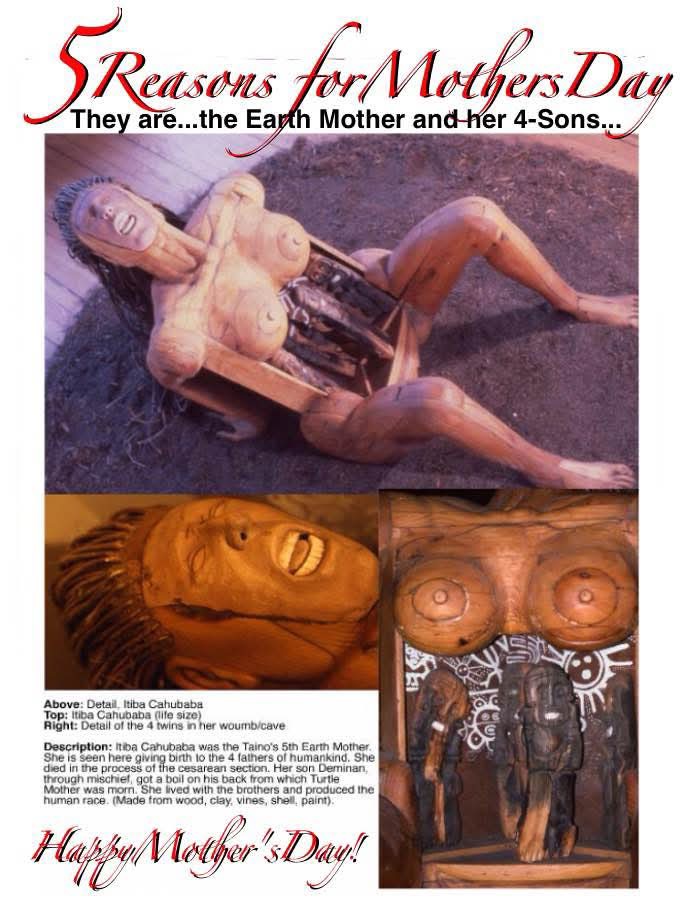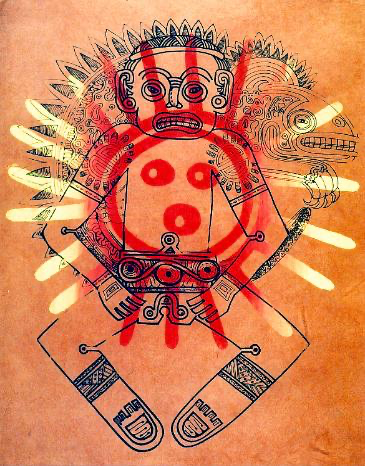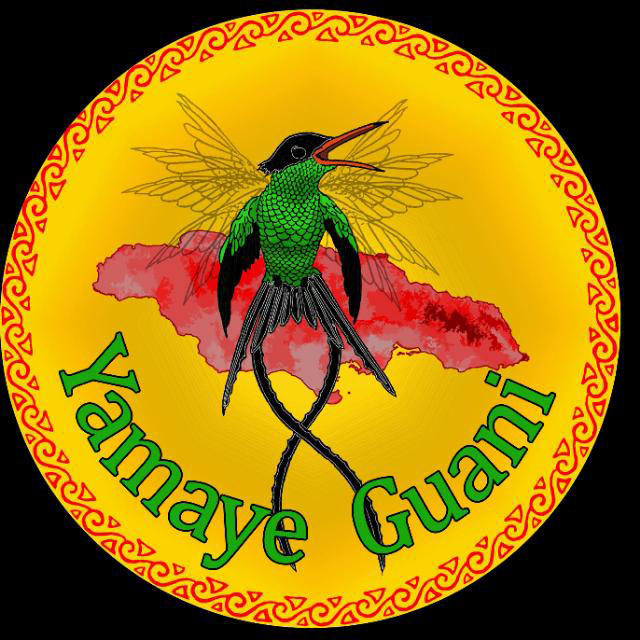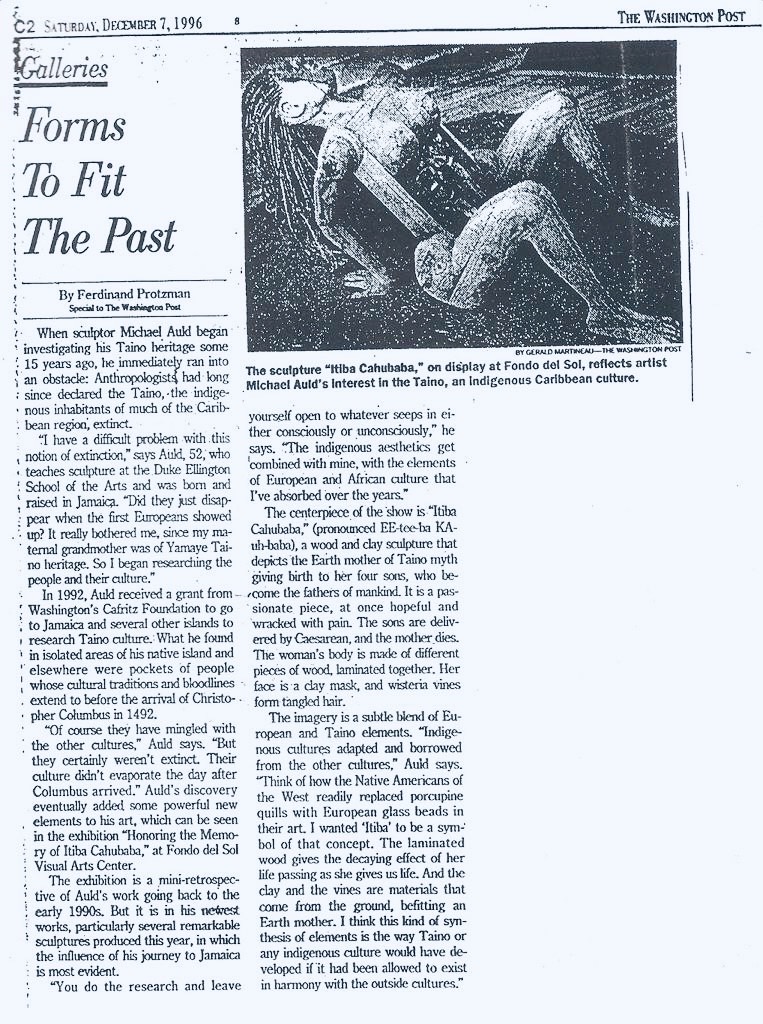In this time of attacks on Amerindians, do you know where we are geographically?
Copyright 2025 by Michael Auld
 |
Left: Illustration by the author of an ancient (1200 BCE) Olmec ruler in Mexico's Yucatan, based upon a gigantic stone sculpture with pyramids in the background.
Right: A painting of Christopher Columbus arriving much later in the Caribbean around 1492 AD. |
The above title has an ice-breaker question that I would ask my students from the elementary school level to adults on the postgraduate level.
For that matter, ask the average American, Caribbean, Central or South American this question:
“Where do you think that we are geographically?”
And I guarantee few will correctly answer this simple question beyond their country's current names and education!
So, with my students, I went further: “What if I told you that we in the Americas are in Asia Extended?”
Silence!
"The reason why it's Asia Extended is that Amerindians are genetically "Asiatic", I offered.
The looks on their faces was priceless!
But, I got my point across.
This was my Modus Operandi because of a misleading wall sign which I saw at Jamestown Festival Park in Virginia. often touted as "Where America began!".
“America is a suburb of Europe,” the dismissively Eurocentric sign declared.
HOWEVER, WHAT WE SHOULD REALY KNOW?
As an educator for almost 40 years in the Nation’s Capital, the above approach was my icebreaker introduction. I would then introduce "Amerindian aesthetics" as a part of my curriculum.
Asia is so large that it has the most human beings on planet Earth. This territory which I call "Asia proper"is in the Eastern Hemisphere of the continent. However, many eastern Asians during periods of time moved all the way over to our Western hemisphere from the Arctic to Tierra del Fuego in South America and into the Caribbean islands. Over 50,000 years ago or more, some believe. Others say 33,000 years ago. Then, genetic evidence now shows that movements occurred 40,000 to 50,000 years ago.
Widespread misnaming of aboriginal territories began after the arrival of foreigners like Christopher Columbus in 1492, who began by renaming the Caribbean islands with Spanish religious names. For example, In October 1492 when he arrived in the Taino’s Lucaya islands now called the Bahamas, he renamed Guanahani, meaning the “Island of the iguana” (populated by many of these sacred lizards), as an ode to the Sun god, Iguana-el. Columbus renamed the island with the Christian name of San Salvador, (the Savior in Spanish). He like those who came after him, began to rename the Amerindian territories with European names. Following suit, European names first in Spanish, then in English, French, Dutch and other so-called "Christian names" appeared on their maps. Not consulting the Amerindians, these were substitutes for what the ancient civilizations in the Americas previously called their territories for hundreds of years.
Arriving foreigners to the continent were even unaware that North America's indigenous translated name is Turtle Island. Still called this by the indigenous, the continent is continued to be known to those who have respected Mother Earth fot thousands of years. Why? Because from the sky, the shape of the continent is that of a giant turtle. The question is, how did these ancients know what their continent looked like from the sky? The same goes for the Caribbean's Taino women who illustrated the hurricane in the same "S"-shape on ceramic pots, as now seen by satellite photography? (See the above title of this blog for Guabancex's image, as The Angry Woman Goddes, Rider of the Winds, was known).
 |
| The Native American's Turtle Island in a sacred circle and with the spiritual colors of the 4-Directions. |
KNOWING THE HISTORY OF WHERE WE ARE
 |
Perú's sacred Caral-Supre pyramid and "Amphitheater" complex, built 2600 BCE. |
 |
Egypt's first step pyramid built in 2780 BCE, for King Djoser's by his architect, Imhotep.
|
For example, when we are taught about ancient civilizations, pyramid building rise to the top of the list. However, Egypt does not have the first pyramids, Perú's Caral-Supe, built around 2600 BCE were at least 100 years before Egypt's step pyramid at Djoser. "Perú's structure was step pyramids had flat, terrased sides and had diverse purposes, including ceremonial and administrative functions." While "Egyptian pyramids primarily served as tombs."--AI.
Countries in the Americas that incorporate ancient history into their education curriculum include Mexico, Peru, and America.
- *Mexico*: Mexico's education system draws from the rich cultural heritage of Mesoamerican civilizations, such as the Aztecs and Mayans. Their curriculum highlights the history, mythology, and contributions of these ancient cultures to modern society.
- *Perú's*: Peruvian education includes the history of the Inca Empire, emphasizing their achievements in mathematics, astronomy, and architecture. Students learn about the empire's social structure, traditions, and cultural practices.
- *United States*: While not exclusively focused on ancient history, the US education system does cover the history of pre-Columbian cultures, including the Aztecs, Mayans, and Incas, as part of its broader curriculum on world history and cultural studies.
ROCKET SCIENCE OR GEOMETRY?
 |
Perú's Caral–Supe pyramid (2627 BCE) may be the world's oldest pyramid which predates Egypt's Djoser step pyramid (2667-3646 BCE) by around 100 years. |
America's current dismissive attitudes towards those Amerindians south of our border, and ignorance about their profound histories, engenders distrust, hate, and expulsion from the northern portion of their hemisphere. It is not rocket science that this dismissive attitude continues today. In some countries in the Americas they begin their history where the ancient cultures had, for example, a Pyramid city in Perú's dated from 5000 years BCE. Plus later, the Mexican city known by the Aztec name as Tenochtitlan, was larger than all European cities.
A layout of Mexico's Aztec (or Mexica, pronounced Meh-she-ka) Tenochtitlan.
 |
Tenochtitlan's cmplex. |
The population of Tenochtitlan (1325 AD), the ancient Aztec capital, is estimated to have had between 200,000 and 400,000 people at its height in the early 1500s, making it one of the largest cities in the world at the time. Some historical estimates vary, with some suggesting numbers as high as 500,000, while others suggest a minimum of 100,000 inhabitants.
Chichén Itzá
Then, there is the Yucatán’s Mayan Chichén Itzá.
 |
Chichén Itzá pyramid has sculptures, with human remains inside. The deity, Kukulcán, the feathered serpent god, alights from the heavens, blesses his worshipers on earth, and then makes his way to the underworld, or Xibalba. In reality, the setting sun during the spring and fall equinoxes casts a shadow on the northern balustrade that resembles the body of a snake slithering down the stairs, an effect which is heightened by joining with the heads of four sculpted heads at the base. |
 |
Chichén Itzá pyramid complex. |
JUST A FEW AMERINDIAN GIFTS
 |
A Spanish woodcut of a Taino smoking sacred cohibi or tobacco the oldest medicinal herb in the Americas which was used mainly for spiritual and healing purposes. Later misused recreationally, it caused cancer. |
 |
The Olmec invention of latex rubber was used to make waterproof shoes, toys. balls and capes. Later used as latex, before plastics, to make gloves, tires, belts, electric wire insulation, condoms and much more. |

 |
A Caribbean Taino rubber ball player as seen by the arriving Spanish in the 1500s AD and its influence on all games played with a rubber ball. To the arriving Spanish, they thought that the bounce of the rubber ball was caused by witchcraft! |
If you like corn, here is the grain which the Caribbean Taino’s called “mahisi”, the root word’s maize.
 |
Corn, the evidence of hemispheric trade, the grain which originated in ancient Mexico, was traded as far north as Canada, south to Argentina, east into the Caribbean, and west into early India where corn cob sculptures adorn an ancient temple. Ancient Indian temple sculptures in Karnataka feature detailed carvings of maize (corn) majsi or maize, or corn. The grain was invented by ancient Mexican horticulturalists who cross-pollinated teosinte grasses to the left, creating various types of corn for a variety of climates, and stories about "Corn Mother" who passed it on to many cultures. Now it feeds millions of humans, cattle, and chickens, etc. This is why corn can only be propagated by humans.
|
 |
Amerindian corn in an ancient Indian temple. Sculpted in 12th and 13th Century A.D. India as Indicators of Pre-Columbian Diffusion. |
 |
The Bread of Life: Yuca, cassava, or manioc came from South America via the Caribbean to the Tropical regions around the world. |
 |
Considered a Super Fruit with more vitamin C than an orange, the guava fruit here has an association with the Taino God of the Afterlife. Guayaba (2 & 3), and his search dog of the Afterlife (4), guava jelly (5), guava paste or cheese (6), manatee bone vomiting stick used in the spiritual cohoba trance ceremony (7) connecting with the deity. |
INDIGENOUS EDUCATION
 |
Early Mexican scribe who could also be a teacher. |
Ancient Mexico featured two main types of formal education for adolescents: the Calmecac, for the sons of nobles and gifted children focusing on leadership, religious duties, and complex subjects like astronomy and literacy; and the Telpochcalli ("House of Youth"), where commoner boys learned practical, military skills and trades. While not a formal classroom in the modern sense, these institutions served as the primary places of higher learning, with rigorous discipline and different curricula tailored to social class and gender.
The Calmecac
Purpose: For the commoner youth, focusing on practical and military training to prepare them for life as warriors.
Curriculum: Emphasized physical endurance, martial arts, and participation in religious songs and dances.
Students: Boys of commoner families.
Key Characteristics
Gender Separation:
Boys and girls attended separate schools after early childhood. Girls typically attended schools that taught household skills, religious practices, singing, dancing, and crafts.
Community-Based:
Schools were often associated with neighborhoods, known as calpulli, each with its own schools.
Discipline:
Both the Calmecac and Telpochcalli were known for strict discipline and harsh punishments for misbehavior.
Home Education:
Before their teenage years, children were educated at home by their parents, learning various skills and cultural practices.
EDUCATION IN THE AMERICAS
Countries in the Americas that incorporate ancient history into their education curriculum include ¹ ² ³:
- *Mexico*: Mexico's education system draws from the rich cultural heritage of Mesoamerican civilizations, such as the Aztecs and Mayans. Their curriculum highlights the history, mythology, and contributions of these ancient cultures to modern society.
- *Perú's*: Peruvian education includes the history of the Inca Empire, emphasizing their achievements in mathematics, astronomy, and architecture. Students learn about the empire's social structure, traditions, and cultural practices.
- *United States*: While not exclusively focused on ancient history, the US education system does cover the history of pre-Columbian cultures, including the Aztecs, Mayans, and Incas, as part of its broader curriculum on world history and cultural studies.
In these countries, the inclusion of ancient history serves to:
- *Preserve Cultural Heritage*: By studying their ancient roots, students develop a deeper understanding and appreciation of their national identity.
- *Promote Cultural Diversity*: Learning about diverse ancient civilizations fosters respect for the contributions of different cultures to modern society.
- *Contextualize Historical Development*: Understanding the past helps students contextualize the historical development of their countries and the world at large.Keep in mind that specific curriculum details may vary depending on the region, school, or educational level.

































